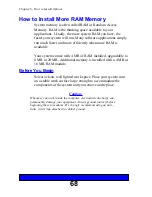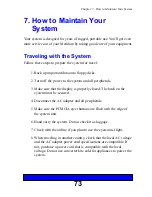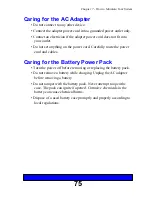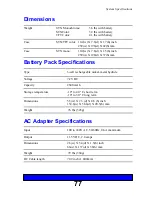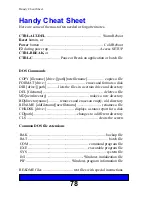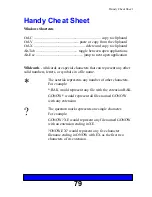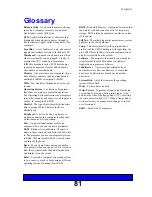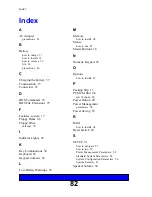
81
Glossary
Glossary
Kilobyte (KB) - A unit used to measure storage
space (in a computer’s memory or on a disk).
One kilobyte equals 1024 bytes.
LED - Light Emitting Diode. A substance that
illuminates when electricity passes through it,
like the indicator lights on the front panel of the
computer.
Local Bus - A set of addresses, data, and control
signals that interface directly with the host CPU.
Mainboard - A printed circuit board into which
other circuit boards can be plugged. Usually, it
contains the CPU, connectors for memory
(SIMMs), secondary cache, SCSI host adapter
socket and expansion slots for add-on boards.
Also known as a motherboard.
Memory - The area where your computer stores
data. Memory contents can be permanent and
unalterable (ROM) or temporary (RAM).
MHz - This stands for Megahertz, or cycles per
second.
Operating System - A collection of programs
that allow a computer to control its operations.
The Operating System determines how programs
run on the computer and supervises all input and
output - for example, MS-DOS.
Parallel - The type of interface which transmits
data in groups of bits. Printers usually use
Parallel ports.
Peripheral - A device (such as, a printer or a
modem) connected to a computer that depends
on the computer for its operation.
Port - A physical input/output socket on a
computer where you can connect a peripheral.
RAM - Random Access Memory. The part of
memory that a computer can both read and write
to. The programs you use are temporarily stored
in RAM. All data stored in RAM is erased when
you turn off the power.
Read - To copy data from one area to another.
For example, when you open a text file stored on
disk, the computer reads the data from the disk
and displays it on the screen.
Reset - To reload a computer’s operating system
so you can retry a task or begin using a different
operating system. Resetting clears RAM.
ROM - Read Only Memory. A portion of memory that
can only be read and cannot be used for temporary
storage. ROM retains its contents even when you turn
off the power.
Self Test - The initial diagnostics procedures a system
performs to check its hardware.
Setup - This refers (usually) to the program that is
used to load the CMOS data base with input from the
user. SETUP sets the date, time, and configuration of
disk drives installed on the system.
Software - The programs that enable your computer
to perform the tasks and functions you indicate.
Application programs are software.
Subdirectory - A directory that originates from
another directory (the root directory or some other
directory). Subdirectories branch out from other
directories.
System Disk - A disk that contains the operating
system. A Boot Disk.
Write - To store data on a disk.
Write-Protect - To prevent a floppy disk from being
overwritten by placing a write-protect tab over the
notch on the side of the floppy disk (5.25") or setting
the write-protect switch (3.5"). When a floppy disk is
write-protected, you cannot erase, change, or record
over its contents.
ZEOS - Greek God of computers.
Summary of Contents for Meridian 400
Page 6: ...6 This page intentionally left blank...
Page 12: ...12 This page intentionally left blank...
Page 42: ...42 This page intentionally left blank...
Page 50: ...50 This page intentionally left blank...
Page 71: ...71 Chapter 6 How to Install Options Floppy disk slot Disk release button...


